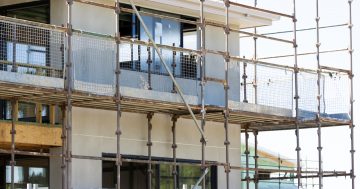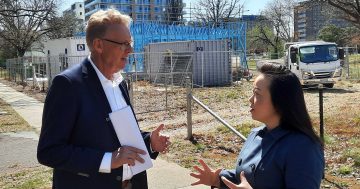
Studies suggest the ACT has an oversupply of housing options, but how much of this translates to reality on the ground?
Affordability and housing supply are important issues for the accommodation and financial security needs of Canberrans. It was therefore with mounting frustration that I found media responses to the ANU Regional Housing Supply and Demand in Australia (B. Phillips & C Joseph) Working Paper focused largely on a single line in a table on page 13 and failed to ask basic questions about what was really going on.
In essence what was reported was that the ACT had an “imbalance intensity” of 4.4% or 6700 properties. What this refers to is surplus housing as a share of total dwellings.
On a positive note, much of response to this has focussed on what the real experience of consumers has been, namely the lack of affordable options in the geographic locations and housing types they are looking for, and it is these insights that are supported by the facts.
There are a number of questions for which people want answers and here are a few of them.
“We are looking for our first home that suits our young family. Why are there so few affordable options outside of apartments?”
“I am looking for an affordable rental property while I complete my degree. Why am I missing out to other applicants so often?”
“We want to travel more and enjoy our grandkids. Why can’t we find an easy-care townhouse option in the areas we want to live?”
“Our family wants to upgrade to a larger home. Why are we getting out bid at auction so frequently?”
All of the above clearly relate to a lack of supply so how do we reconcile this lived experience with the reports of excess housing?
The answers to all the above lie in a single word. Appropriate.
Here are several reasons that have contributed to the above challenges being faced by real people every day.
- Lack of appropriate land to meet the needs of first homebuyers. It is arguable that this has been addressed at some level with recent land releases however for the majority of the last 10 years it has not been possible to build a median-priced house on a median-priced block of land. We have to acknowledge that with a monopoly on land supply in the ACT and the increasing reliance of the ACT budget on land taxes and sales, that there is very good reason why buyers have been forced outside our borders.
- Lack of appropriate housing options. Retirees and empty nesters want townhouse options in suburban locations, not greenfields. First homebuyers would often like affordable houses yet between July and September 2017 over 52% of new apartments sold by Independent Property Group were to these buyers.
- Lack of appropriate planning laws to overcome the previous 2 points. We have a Lease Variation Charge (LVC) that overtaxes redevelopment of ageing suburban blocks meaning that many owners of these properties not only can’t afford to redevelop their own block with a modern townhouse or dual occupancy dwelling, they also have no options to move to. Asa result, they often stay in their existing property for years beyond the time they prefer with the added consequence of reducing the available housing supply for first home buyers or families looking to upgrade.
- Lack of appropriate rental properties. The rental vacancy rate at 31st October for Independent was 0.39%. Or to put it another way, 99.61% of rental properties in a portfolio of over 3500 dwellings were occupied. Leading into the busiest time of the year for property managers, this is dangerously low and has the obvious downstream impact of driving up prices and reducing affordability still further.
When I read the Working Paper, it was heartening to read the authors’ comments in the Executive Summary and throughout the document that said, “This paper does not conclude that people’s housing needs are being met or that what is being supplied is at an affordable price point for all families.”
And that statement sums up the challenge.
This is not a challenge that will be resolved by glib headlines or kneejerk reactions. There are a number of levers that will need to be pulled and these will include land release, barriers to entry, planning laws and drivers of appropriate housing supply.
Political over-reactions such as the suggestion to remove negative gearing options from certain property classes will just make things worse. Perhaps some consideration should be given to reviewing the taxation of capital gains where this will not inhibit the provision of suitable housing options.
And maybe there is some light at the end of this tunnel. While not addressing the LVC issue the Environment, Planning and Sustainable Development Directorate released a discussion paper this month that floated the possibility of allowing strata titling of dual occupancy dwellings on RZ1 blocks in Canberra. While the industry has been calling for this for many years, we welcome this change of heart that could have the impact of increasing sustainability, reducing infrastructure costs and growing government revenue through rates which many Canberrans would be glad to pay.
Affordable Housing is not a simple fix. It can be addressed and will be improved more quickly if all stakeholders are prepared to sideline vested interests where possible and work together to achieve a great result.
What are your thoughts on this issue? Let us know by commenting below.





















